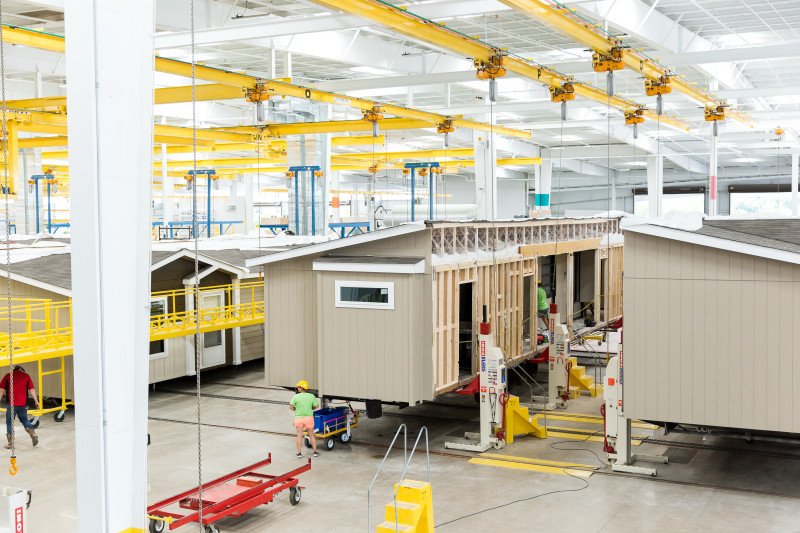How are Manufactured Homes Built?
Do you want to learn more about how manufactured homes are built? Well, we’re giving you an overview of the construction process, from the home’s floor and walls to the roof and the finishing touches.
Clayton Built® homes are constructed indoors in our home building facilities, using a streamlined process to make everything as efficient as possible. Throughout this process, we use products from top homebuilding brands, as well as materials from our own internal supply chain, Clayton Supply. And all manufactured homes are built to the national HUD code, which sets standards for energy efficiency, safety, and more.
But how do all of these pieces come together to create a manufactured home that’s both beautiful and durable? Well, let’s take a look, step by step.
1. The Home’s Frame
The manufactured home building process starts with a steel frame. Once the frame is in place, layers of insulation are added before the flooring system and plumbing are installed. The wooden floor frame and plumbing are also assembled together.
2. The Flooring and Walls
Next, the floor frame is dressed in the flooring finishes, like laminate, wood or carpet. The exact type of flooring used in different areas of the home that’s being built can vary based on the specific style, the floor plan or if the home buyer has chosen any customization or upgrade options.
Along with the flooring, team members then build the home’s interior and exterior walls from materials like finished drywall or covered wallboards. Once they are finished, the interior walls are installed first, then cabinets and appliances. The exterior walls are then lifted into place using a track system in the ceiling of the facility, and insulation in the walls and electrical wiring are installed.
3. The Roof
Now the home is ready for a roof. The truss system is adhered to the ceiling gypsum, and a laminated ridge beam and structural lumber headers support the trusses over any openings. It’s also during this part of the process that some of the home’s lighting is installed. Next, the roof is ready to be lowered onto the rest of the home and joined to the exterior walls. And finally, each side of the truss system is sealed, insulation is blown in and the ceiling is painted.
4. The Siding and Interior Touches
Once these pieces are together, it's all hands on deck. A team will add shingles, place siding, install doors and windows, and wrap the exterior of the home to prepare it for delivery to the home site. And while all of this is going on, the inside of the home really starts to take shape, too.
Each home has its own unique details, from the interior paint and siding colors to any customized or upgraded features. These features can include fireplaces, built-in bookcases or shelves, entertainment centers, office nooks or more, depending on the home model. Many of our floor plans also offer different kitchen or bathroom configurations that include details like kitchen islands or standalone tubs, so that is accounted for when the home is being built.
5. The Delivery
While the exact amount of time it takes to build a manufactured home can vary, any tasks that need to be done to prepare the home site can often take place while this is happening. This includes determining how the home will be laid out on the land, grading the site for proper drainage and any necessary land improvement options like a well, driveway or septic system.
Once the home and the home site are ready, the home can be delivered and final installation will take place. This is when the home is placed on its foundation and any finishing touches are added, including skirting, before the final walkthrough. Then, everything is ready for move-in day!
So there you have it, an overview of what it takes to build a manufactured home. And if you’re ready to learn more about Clayton’s home building process, from materials and trends to more about energy efficiency and sustainability, you can head over to our Studio blog today!





